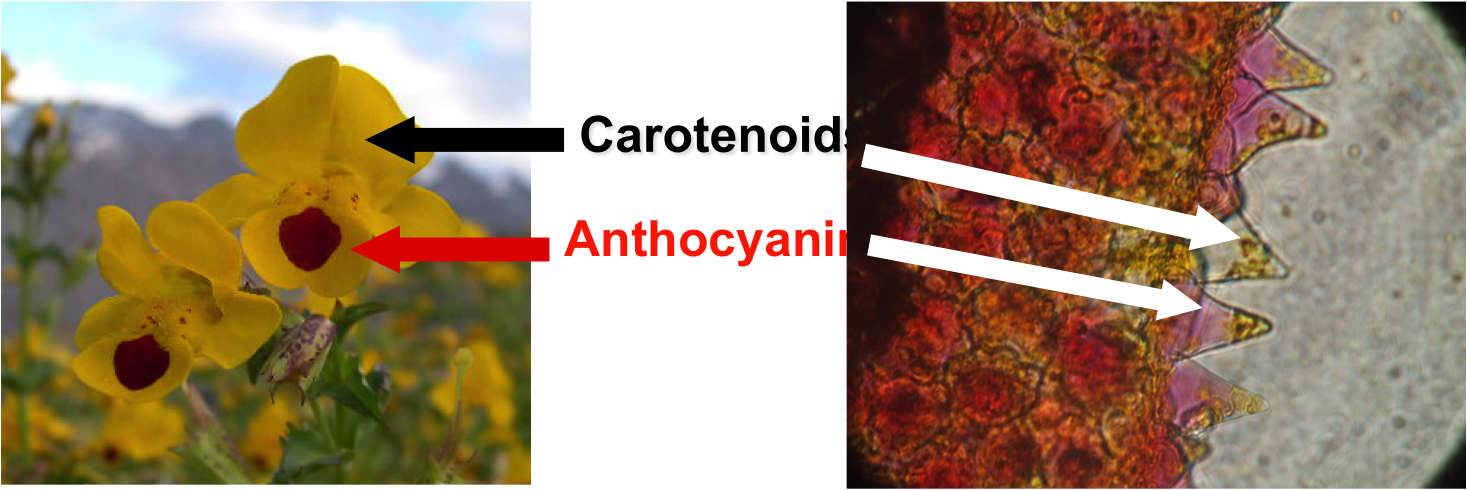What makes the Chilean Mimulus flowers different colors?
To all appearances, the Chilean Mimulus have "changed colors", from the yellow-with-red spots of M. l. luteus to the lavender of M. l. variegatus and M. naiandinus, to the orange of M. cupreus. I was surprised to find, through Thin Layer Chromatography analysis of petal extracts (below), that in fact the red-pigmented parts of all of these taxa produce the same type of anthocyanin pigment, called cyandin.

The key to understanding the apparent color change is that each species produces red-hued anthocyanins, as well as the yellow carotenoids, in varying quantities.

In the left-hand photo above is a picture of M. l. luteus, which has both yellow- and red-pigmented petal tissue. On the right is a thin slice of red petal viewed under a microscope. You can see that in fact it contains both pink/lavender anthocyanins, produced in the voluminous vacuole of each conical petal cell, and yellow carotenoids sequestered in each cell's granular chromoplasts.
 The two pigment types in combination create the fire-hydrant red spots on the throat of M. l. luteus. A flower producing lots of anthocyanins but few carotenoids will be lavender like M. l. variegatus; a flower producing lots of carotenoids and smaller amounts of anthocyanins will be orange like M. cupreus.
The two pigment types in combination create the fire-hydrant red spots on the throat of M. l. luteus. A flower producing lots of anthocyanins but few carotenoids will be lavender like M. l. variegatus; a flower producing lots of carotenoids and smaller amounts of anthocyanins will be orange like M. cupreus.
Like an artist mixing simple colors of paints on a palette to achieve a specific shade (right), the Chilean Mimulus flowers achieve their visual effect using varying proportions of red and yellow pigments.